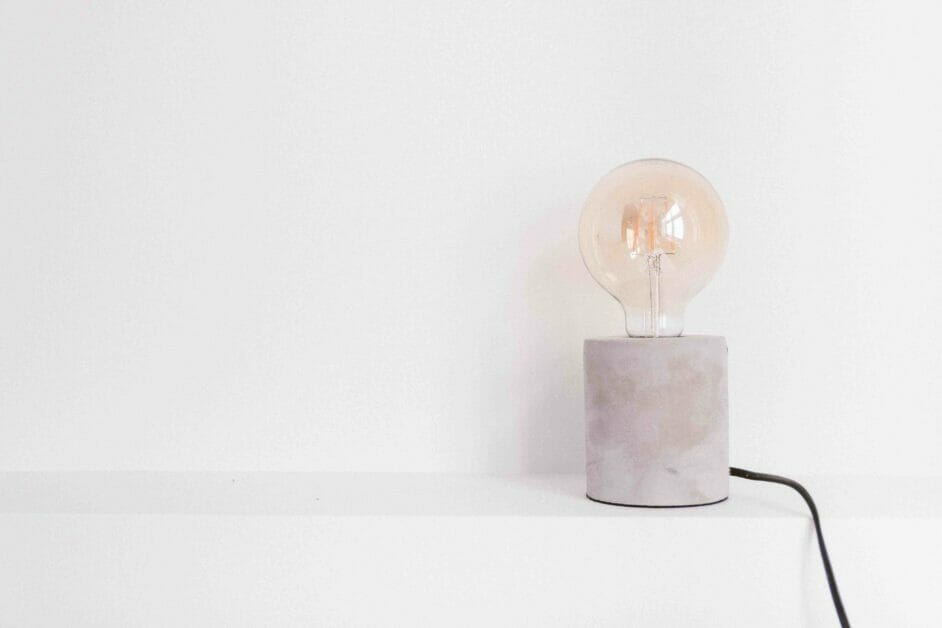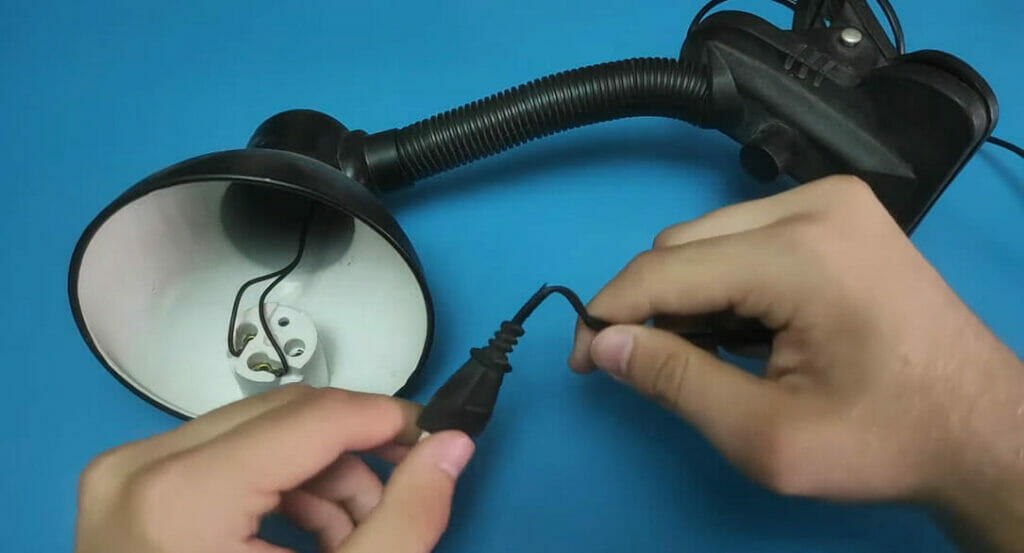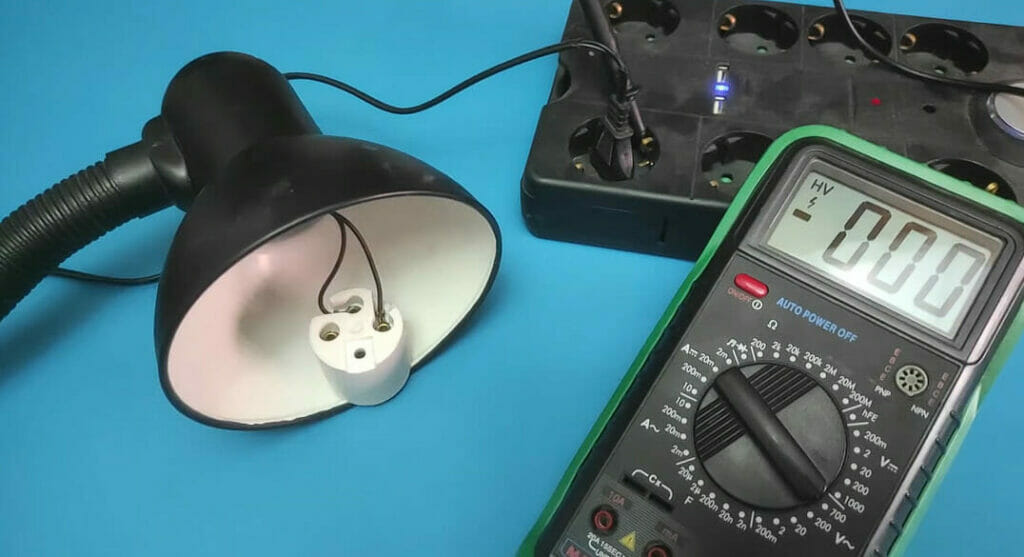Which is the Hot Wire on a Lamp Cord (Guide & Steps)

The difference between the hot and neutral wires might appear confusing. Rest assured, though; it’s not as complicated as it first seems. It becomes relatively straightforward once we understand the basics.
Identifying a lamp cord’s hot wire is simple: it’s usually smooth and colored black or red. The neutral wire is typically ribbed and often white or gray. Now, if the wires on your lamp are the same in texture and color, you can use a multimeter for confirmation.
Below ill go into more detail and demystify the components of a lamp cord, guiding you on identifying the hot wire.
Components of a Lamp Cord

Parts of a Lamp Cord and Their Functions
Alright, time to dig in. Let’s simplify this by breaking it down into bite-sized pieces because understanding the anatomy of a lamp cord is key.
A lamp cord is often a duo of hot and neutral wires, each playing distinct roles in the electrical dance.
| Part of Cord | Description | Function |
|---|---|---|
| Hot Wire | Smooth wire, usually black or red | Carries electricity from the power source to the lamp |
| Neutral Wire | Ribbed wire, usually white or gray | Returns the electrical current to the source after powering the lamp |
| Grounding Wire (if present) | It can be a green or bare wire | Provides a safe path for electricity in case of any mishap |
Typical Color Coding in Lamp Cords
Now, let’s throw some color into the mix. Here’s the thing: in an ideal world, all lamp cords would follow a standard color scheme.
The hot wire would be one color, say black or red, and the neutral wire would be another, like white or light gray.
We live in a diverse world, and sometimes things get mixed up. In most American-made lamp cords, the hot wire is smooth, and the neutral wire is ribbed.
In other parts of the world, color coding may vary, with the hot wire being brown and the neutral wire blue.
The bottom line, knowing what you’re dealing with when handling any electrical wiring is crucial. So grab that lamp cord, look closely, and let’s shed some light on things together!
Identifying the Hot Wire on a Lamp Cord
Time to roll up our sleeves and get into the nitty-gritty of identifying the hot wire on a lamp cord.
This is fundamental knowledge whether you’re getting a new lamp ready to light up a room or doing some at-home repair work.
The hot wire is the workhorse of your lamp, carrying the electric current from your power source straight to your lamp. It’s like the lifeblood of your lamp’s light bulb.
How to Identify the Hot Wire

Now there may be instances when the wires in your lamp are all in the same color. In such cases, here’s a simple step-by-step guide to identifying hot wires:
Step 1: Safety First
Before we go any further, safety always comes first. Ensure your lamp is unplugged from the power source before you start. This will prevent any unwanted shocks.
Step 2: Examine the Cord
Pick up your lamp cord and look at it. Feel the cord with your fingers. You’ll likely notice that one side of the cord is smooth while the other has a slightly ribbed texture. The smooth and the ribbed sides are the key indicators to identify which is the hot wire.
Step 3: Differentiating by Texture
Generally, in a lamp cord, the smooth wire is the hot wire, and the ribbed wire is the neutral wire. So, feel for the texture of the wires. You’ve got the hot wire if it’s smooth to the touch.
Step 4: Color Coding
Now, check for any color coding. In many lamp cords, especially those made in the US, the hot wire is often colored black or red. On the other hand, the neutral wire may be white or grey. However, remember that color coding is not universal and can vary.
Step 5: Double-Check with a Multimeter
1. Safety Precautions
Safety should be your top priority. Ensure the lamp is unplugged before you start, and ensure you’re working in a dry area to avoid electrical shock. Hiring a professional electrician is better if you’re not confident about doing this task.
2. Set the Multimeter
Turn your multimeter on and set it to measure AC voltage. This setting may vary depending on the model of your multimeter, but it’s generally represented by a ‘V’ with a wave (~) symbol next to it.
3. Connect the Ground
Connect one probe of the multimeter to a known ground. This could be the third prong on the plug or a grounded metal box. Using a two-prong plug, you can use a metal faucet or the metal screw on a light switch cover as a known ground. The black probe is usually the one to connect to the ground.
4. Touch the Wires
Now, touch each wire with the other probe (usually red). Ensure not to touch the metal part of the probe to avoid any chance of shock.
5. Read the Multimeter
When you touch the probe to the hot wire, the multimeter will give a reading indicating the voltage. The exact reading will depend on your electrical system, but it should be around 120 volts in the US. The neutral wire should give a reading of zero or near zero.
6. Identify the Hot Wire
The wire that gave a reading on the multimeter is your hot wire.
Remember, always prioritize safety when dealing with electricity. Don’t hesitate to call a professional electrician if you feel unsure or uncomfortable. They have the skills and experience to handle these tasks safely and effectively.
FAQs
Why is it important to know the difference between hot and neutral wires?
Understanding the difference is crucial for the safety and proper functioning of the lamp. The hot wire carries current from the power source to the appliance, while the neutral wire carries it back. Reversing these can lead to potential hazards and malfunctioning of the lamp.
What happens if I mix up the hot and neutral wires?
If the hot and neutral wires are reversed, it could lead to a condition known as a “hot chassis,” which can be hazardous, especially with appliances with metal parts. It can also affect the operation of switches and can potentially damage the appliance.
What if my lamp cord lacks color coding or distinct textures?
If your lamp cord doesn’t have distinct textures or color coding, it would be best to use a multimeter to test which wire is hot. This process should be performed with utmost care. If unsure, always consult a professional electrician.
Can a multimeter determine the hot wire if my lamp cord lacks color coding or distinct textures?
Yes, a multimeter can help identify the hot wire. Set your multimeter to measure AC voltage. Connect one probe to a known ground, like a grounded metal box or the third prong on the plug, then touch the other probe to each wire in turn. The wire that gives you a reading is the hot wire.
Is It the same process for all types of lamps?
While the basic principles of electrical wiring are the same, different lamps might have different designs and require different approaches. Always refer to the manufacturer’s instructions when available.
Can the color coding for hot and neutral wires vary in different countries?
Yes, color coding for hot and neutral wires can vary in different countries. For instance, the color scheme in Europe usually involves blue for neutral and brown for hot. Always refer to the local regulations or consult a professional when in doubt.
Remember, safety is paramount when dealing with electricity. Always unplug appliances before working on them, and consult a professional if you’re unsure.
References
Organizations:
- National Electrical Manufacturers Association (NEMA). https://www.nema.org/
- Electrical Safety Foundation International (ESFI). https://www.esfi.org/
Websites:
- The Circuit Detective. http://thecircuitdetective.com/
- Do It Yourself. https://www.doityourself.com/
- All About Circuits. https://www.allaboutcircuits.com/
Video Reference
Electro University
